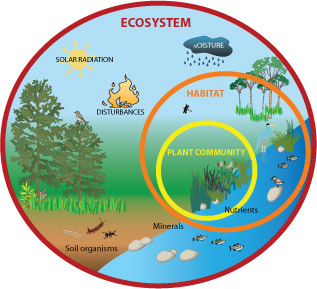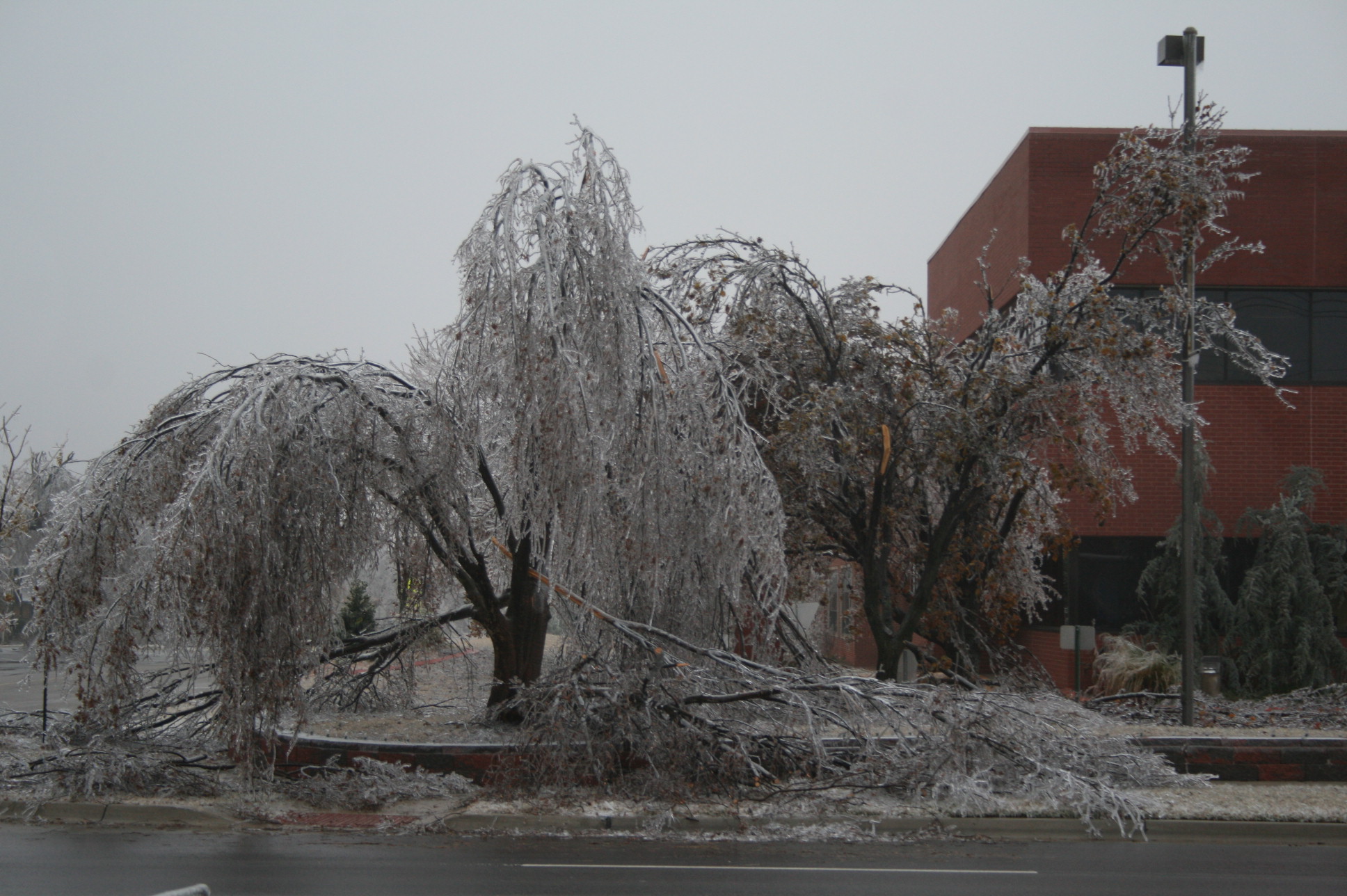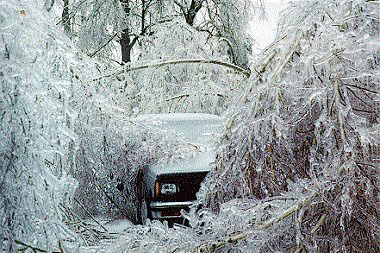Topic scientific definition of ecosystem: Explore the scientific definition of an ecosystem, a complex network where life interconnects in delicate balance, showcasing nature"s intricate relationships and biodiversity.
Table of Content
- What is the scientific definition of an ecosystem?
- Definition of Ecosystem
- Components of an Ecosystem: Biotic and Abiotic Factors
- Types of Ecosystems: Aquatic, Terrestrial, and More
- Energy Flow in Ecosystems: The Role of Producers, Consumers, and Decomposers
- Nutrient Cycles: Carbon, Nitrogen, and Water Cycles
- Importance of Biodiversity in Ecosystems
- YOUTUBE: What Is an Ecosystem?
- Human Impact on Ecosystems
- Conservation and Restoration of Ecosystems
- Case Studies: Examples of Ecosystem Management and Challenges
- Future Directions in Ecosystem Research
What is the scientific definition of an ecosystem?
An ecosystem can be defined as:
- A geographic area where plants, animals, and other organisms coexist and interact with each other.
- The combination of living organisms, their physical environment, and the various relationships that exist among them within a specific space.
- A system where the flora, fauna, weather, and landscape components work together to create a balanced and self-sustaining environment.
READ MORE:
Definition of Ecosystem
An ecosystem is a dynamic complex of plant, animal, and microorganism communities and their non-living environment interacting as a functional unit. This scientific concept emphasizes the interconnectedness of organisms with each other and their physical surroundings. Ecosystems vary in size, from small ponds to vast forests or oceans, and can be natural or artificial. The health and stability of ecosystems are crucial for the services they provide, including oxygen production, climate regulation, and habitats for biodiversity.
- Biological Components: Including all living organisms within the ecosystem, categorized into producers, consumers, and decomposers.
- Physical Components: Comprising non-living elements such as water, air, minerals, and climate that influence living organisms.
- Interactions: The relationships and processes between biotic and abiotic components, such as nutrient cycles and energy flow.
Ecosystems are foundational to understanding ecological principles and the impact of human activities on the environment. They illustrate the necessity of conserving natural habitats and the intricate balances that sustain life on Earth.

Components of an Ecosystem: Biotic and Abiotic Factors
Ecosystems are composed of biotic and abiotic components that interact in complex ways to sustain life. Understanding these components is crucial for grasping how ecosystems function and maintain balance.
- Biotic Factors: These are the living components of an ecosystem, which include:
- Producers (autotrophs): Organisms that synthesize their own food from sunlight or chemical energy, such as plants and algae.
- Consumers (heterotrophs): Organisms that obtain energy by consuming other organisms, ranging from herbivores and carnivores to omnivores.
- Decomposers: Organisms that break down dead organic material, returning nutrients to the soil, such as fungi and bacteria.
- Abiotic Factors: These are the non-living physical and chemical components of an ecosystem, including:
- Water: Essential for all forms of life, affecting where organisms can live.
- Soil: Comprises minerals and organic matter, providing nutrients for plants.
- Air: Supplies oxygen for respiration and carbon dioxide for photosynthesis.
- Climate: Influences temperature, precipitation, and sunlight, which in turn affect ecosystem dynamics.
Together, biotic and abiotic factors create a dynamic and interdependent system where energy flows and materials are recycled, enabling diverse forms of life to thrive.
Types of Ecosystems: Aquatic, Terrestrial, and More
Ecosystems are broadly categorized into two main types: aquatic and terrestrial. Each type hosts a unique set of organisms adapted to their specific environment. Additionally, there are more specialized ecosystems within these broad categories.
- Aquatic Ecosystems: These ecosystems are water-based and are subdivided into:
- Freshwater Ecosystems: Including rivers, lakes, streams, and wetlands, which are characterized by low salt content.
- Marine Ecosystems: Covering oceans, seas, coral reefs, and estuaries, with high salt content and diverse life forms.
- Terrestrial Ecosystems: These are land-based ecosystems, including:
- Forests: Ranging from tropical rainforests to boreal forests, rich in biodiversity.
- Deserts: Arid regions with sparse vegetation and adapted life forms.
- Grasslands: Including savannas and temperate grasslands, important for grazing animals and characterized by vast grassy fields.
- Tundra: Cold, treeless regions with permafrost, found in the Arctic and high mountains.
- Specialized Ecosystems: Beyond these broad categories, there are unique ecosystems like mangroves, peatlands, and polar ice caps, each with specialized conditions and organisms.
Understanding the diversity of ecosystems is essential for appreciating the complexity of life on Earth and the importance of conserving these natural habitats.

Energy Flow in Ecosystems: The Role of Producers, Consumers, and Decomposers
The flow of energy through an ecosystem follows a fundamental path from producers to consumers and finally to decomposers. This cyclical process ensures the transfer of energy and the recycling of nutrients within ecosystems.
- Producers (Autotrophs): These are the foundation of the energy pyramid, capable of converting solar energy into chemical energy through photosynthesis. Plants, algae, and some bacteria serve as primary producers, supplying energy to all other organisms in the ecosystem.
- Consumers (Heterotrophs): Consumers rely on consuming other organisms to obtain energy. They are classified as:
- Primary Consumers (Herbivores): Eat producers directly.
- Secondary Consumers (Carnivores): Prey on primary consumers.
- Tertiary Consumers: Predators at the top of the food chain, consuming secondary consumers.
- Omnivores: Organisms that eat both plants and animals.
- Decomposers: These organisms, including fungi and bacteria, break down dead organic matter and waste products into simpler compounds. This decomposition process releases nutrients back into the environment, making them available for reuse by producers, thus closing the energy loop.
This energy flow creates a complex web of interactions among organisms, highlighting the importance of each group in maintaining the balance and health of ecosystems.
Nutrient Cycles: Carbon, Nitrogen, and Water Cycles
Nutrient cycles, also known as biogeochemical cycles, are critical for recycling essential elements and compounds in ecosystems. These cycles ensure the availability of nutrients in forms that can be assimilated by organisms. Three fundamental nutrient cycles are the carbon, nitrogen, and water cycles, each playing a vital role in sustaining life.
- Carbon Cycle: This cycle describes the movement of carbon among the atmosphere, oceans, terrestrial ecosystems, and living organisms. Photosynthesis by plants captures carbon dioxide from the air, which is then used to build organic matter. Respiration, decomposition, and combustion release carbon back into the atmosphere or soil, completing the cycle.
- Nitrogen Cycle: Nitrogen is essential for all living organisms as it is a key component of amino acids, proteins, and nucleic acids. The nitrogen cycle involves the conversion of nitrogen among various forms through processes such as nitrogen fixation, nitrification, denitrification, and ammonification. This cycle connects the atmosphere, which is the largest reservoir of nitrogen, with terrestrial and aquatic ecosystems.
- Water Cycle: The water cycle, or hydrological cycle, encompasses the continuous movement of water on, above, and below the surface of the Earth. This cycle involves evaporation, condensation, precipitation, infiltration, and runoff. Water is essential for regulating climate, supporting plant growth, and sustaining animal life.
Understanding these nutrient cycles is essential for grasping how ecosystems function and the interdependence of life forms and their environment.

Importance of Biodiversity in Ecosystems
Biodiversity, or biological diversity, refers to the variety of life on Earth, including the diversity of species, genetic variation within species, and variety of ecosystems. Biodiversity is not just a measure of the richness of ecosystems but also a critical factor for their resilience, productivity, and stability.
- Supports Ecosystem Services: Biodiverse ecosystems provide essential services such as air and water purification, soil fertility and formation, pollination of plants, and regulation of climate.
- Enhances Resilience: Ecosystems with high biodiversity are more resilient to disturbances like natural disasters and human-induced changes. A diverse gene pool ensures that some species can survive and adapt to environmental changes, maintaining ecosystem functions.
- Promotes Productivity: A rich variety of species can lead to increased productivity because different species often play different roles in the ecosystem. This biodiversity ensures a more efficient use of resources and a higher level of primary productivity.
- Medical and Scientific Research: Many medicines and drugs have been discovered from plants and animals in biodiverse ecosystems. Furthermore, the study of diverse species offers insights into life processes that can lead to scientific breakthroughs.
- Cultural and Aesthetic Value: Biodiversity enriches cultures and provides inspiration for art, music, and literature. Natural landscapes and wildlife are also important for recreation and mental well-being.
The conservation of biodiversity is therefore crucial for sustaining the ecosystems upon which human life depends. Protecting biodiversity ensures the survival of intricate ecological networks and the myriad benefits they provide to humanity.
What Is an Ecosystem?
Ecosystem: Discover the fascinating world of ecosystems in this eye-opening video that showcases the intricate balance of nature. Witness the beauty of diverse habitats and learn about the interdependence of all living organisms. Environmental Science: Dive deep into the realm of environmental science with this informative and engaging video that explores the various factors impacting our planet. Gain insight into sustainability, climate change, and innovative solutions for a better future.
What Is Environmental Science? Definition and Scope
Visit Study.com for thousands more videos like this one. You\'ll get full access to our interactive quizzes and transcripts and can ...
Human Impact on Ecosystems
Human activities have profound impacts on ecosystems, affecting their ability to function and sustain life. While some impacts can be positive, promoting biodiversity and ecosystem health, many are negative, leading to degradation and loss of biodiversity.
- Land Use Change: Conversion of natural habitats into agricultural land, urban areas, and infrastructure developments reduces habitat availability and fragments ecosystems, impacting species survival.
- Pollution: Air, water, and soil pollution from industrial activities, agriculture, and waste disposal introduce harmful substances into ecosystems, affecting both wildlife and human health.
- Climate Change: Human-induced climate change, primarily through the release of greenhouse gases, alters temperature and precipitation patterns, affecting ecosystems worldwide. Species migration, altered breeding seasons, and disrupted food chains are some consequences.
- Overexploitation: Overfishing, excessive hunting, and harvesting of wild species at rates faster than their natural regeneration lead to population declines and extinction.
- Invasive Species: The introduction of non-native species can outcompete, prey upon, or bring diseases to native species, disrupting ecosystem balance.
- Conservation Efforts: Positive human impacts include conservation work, restoration projects, and sustainable management practices that help protect and restore ecosystem health and biodiversity.
Understanding and mitigating the negative impacts of human activities on ecosystems is crucial for preserving the planet"s biodiversity and ensuring the well-being of future generations.

Conservation and Restoration of Ecosystems
Conservation and restoration efforts are vital for safeguarding ecosystems and the biodiversity they support. These efforts aim to protect ecosystems from degradation and restore them to their natural state, ensuring their services are preserved for future generations.
- Protected Areas: Establishing national parks, reserves, and sanctuaries to protect habitats and species from human activities.
- Restoration Projects: Activities like reforestation, wetland restoration, and the rehabilitation of degraded lands help restore ecosystem functions and biodiversity.
- Sustainable Practices: Promoting sustainable agriculture, forestry, and fishing practices reduces the impact on ecosystems and maintains biodiversity.
- Legislation and Policies: Implementing laws and policies that regulate land use, pollution, and the protection of endangered species and habitats.
- Community Involvement: Engaging local communities in conservation efforts ensures sustainable management and protection of natural resources.
- Climate Change Mitigation: Efforts to reduce greenhouse gas emissions and increase carbon sequestration through ecosystem management contribute to climate change mitigation.
Through these combined efforts, it is possible to conserve and restore ecosystems, ensuring they continue to support life on Earth while meeting the needs of current and future generations.
Case Studies: Examples of Ecosystem Management and Challenges
Examining case studies of ecosystem management provides valuable insights into successful strategies and the challenges faced in conserving biodiversity and ecosystem services. These examples highlight the complexity of ecosystem management and the need for integrated approaches.
- The Amazon Rainforest: Efforts to combat deforestation and promote sustainable land use practices illustrate the challenges of balancing economic development with conservation in one of the world"s most biodiverse regions.
- The Great Barrier Reef: Management strategies here focus on reducing pollution, controlling invasive species, and mitigating the impacts of climate change to protect the world"s largest coral reef system.
- Serengeti National Park: This case study demonstrates the importance of maintaining natural migrations and predator-prey relationships in preserving the ecological integrity of savanna ecosystems.
- Restoration of the Everglades: Efforts to restore natural water flow and improve water quality in this unique wetland ecosystem highlight the challenges of ecosystem restoration in areas impacted by extensive human alteration.
- Conservation of the Arctic: Addressing the impacts of climate change, pollution, and exploitation of natural resources in the Arctic underscores the global cooperation required to manage and protect vulnerable polar ecosystems.
These case studies emphasize the importance of multidisciplinary approaches, stakeholder engagement, and adaptive management in addressing the complex challenges of ecosystem conservation and restoration.

READ MORE:
Future Directions in Ecosystem Research
The future of ecosystem research is poised to address critical questions related to biodiversity, climate change, and human impacts on natural systems. Advancements in technology and interdisciplinary approaches will drive forward our understanding and conservation efforts.
- Integrating Big Data and AI: Utilizing big data analytics and artificial intelligence to model ecosystem dynamics, predict changes, and inform conservation strategies.
- Understanding Climate Change Impacts: Focusing on how ecosystems can adapt to climate change, mitigate its effects, and the role of feedback mechanisms in climate-ecosystem interactions.
- Enhancing Biodiversity Conservation: Developing more effective methods for conserving biodiversity, including genetic diversity, species, and ecosystems, in the face of changing environments.
- Ecosystem Services Valuation: Improving methods for valuing and integrating ecosystem services into economic systems and policy-making to promote sustainable development.
- Community-based Conservation: Engaging local communities in ecosystem management and conservation, recognizing the importance of traditional knowledge and practices.
- Restoration Ecology: Advancing the science of ecosystem restoration to enhance resilience, recover endangered species, and restore degraded landscapes.
By addressing these and other emerging questions, ecosystem research will continue to play a crucial role in guiding conservation efforts and ensuring the sustainability of our planet"s natural resources for future generations.
Exploring the scientific definition of ecosystems reveals the intricate web of life and its processes, highlighting the urgent need for conservation and sustainable interaction with our planet"s invaluable natural resources.















